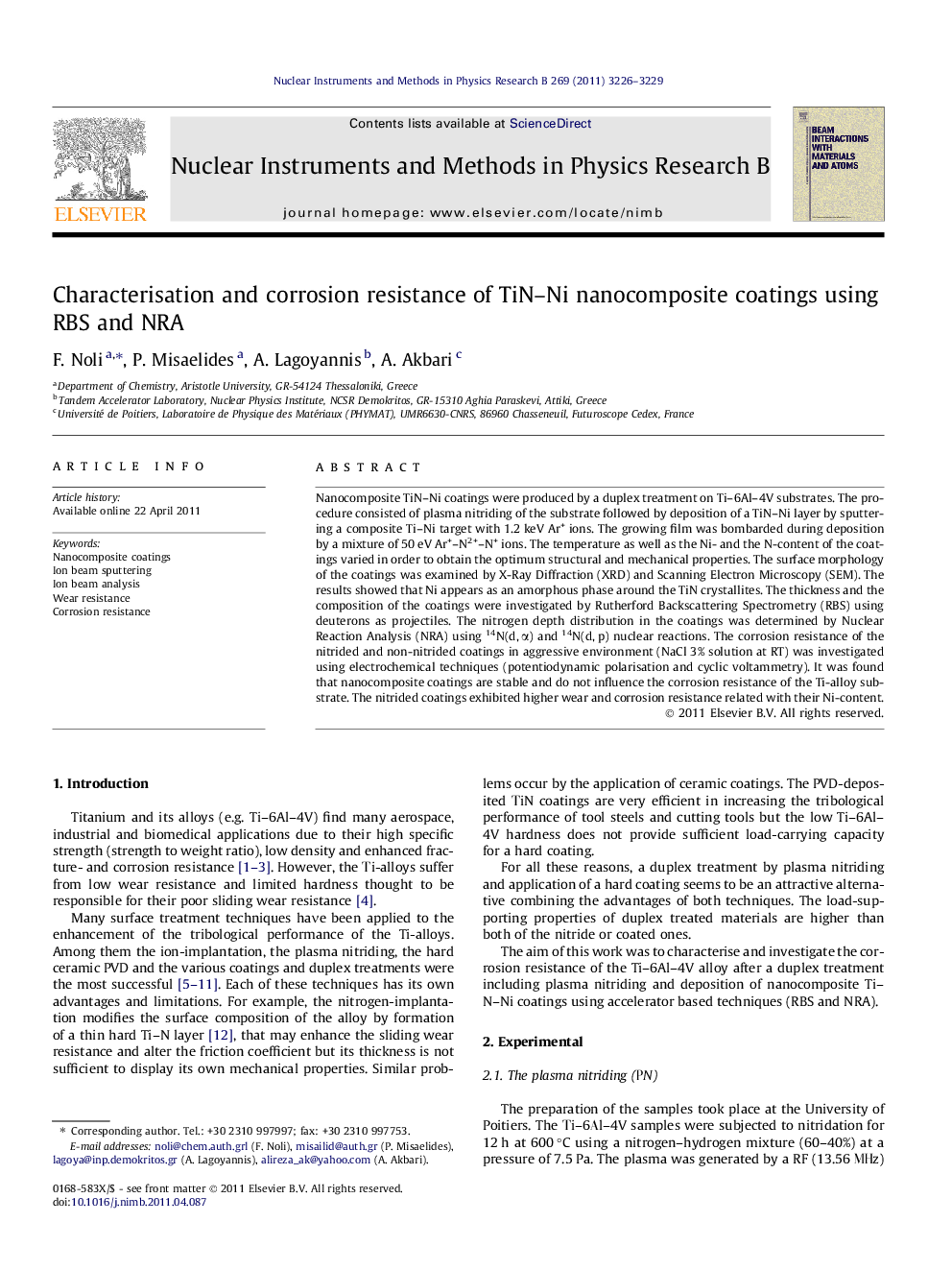| Article ID | Journal | Published Year | Pages | File Type |
|---|---|---|---|---|
| 1683023 | Nuclear Instruments and Methods in Physics Research Section B: Beam Interactions with Materials and Atoms | 2011 | 4 Pages |
Abstract
Nanocomposite TiN-Ni coatings were produced by a duplex treatment on Ti-6Al-4V substrates. The procedure consisted of plasma nitriding of the substrate followed by deposition of a TiN-Ni layer by sputtering a composite Ti-Ni target with 1.2 keV Ar+ ions. The growing film was bombarded during deposition by a mixture of 50 eV Ar+-N2+-N+ ions. The temperature as well as the Ni- and the N-content of the coatings varied in order to obtain the optimum structural and mechanical properties. The surface morphology of the coatings was examined by X-Ray Diffraction (XRD) and Scanning Electron Microscopy (SEM). The results showed that Ni appears as an amorphous phase around the TiN crystallites. The thickness and the composition of the coatings were investigated by Rutherford Backscattering Spectrometry (RBS) using deuterons as projectiles. The nitrogen depth distribution in the coatings was determined by Nuclear Reaction Analysis (NRA) using 14N(d, α) and 14N(d, p) nuclear reactions. The corrosion resistance of the nitrided and non-nitrided coatings in aggressive environment (NaCl 3% solution at RT) was investigated using electrochemical techniques (potentiodynamic polarisation and cyclic voltammetry). It was found that nanocomposite coatings are stable and do not influence the corrosion resistance of the Ti-alloy substrate. The nitrided coatings exhibited higher wear and corrosion resistance related with their Ni-content.
Keywords
Related Topics
Physical Sciences and Engineering
Materials Science
Surfaces, Coatings and Films
Authors
F. Noli, P. Misaelides, A. Lagoyannis, A. Akbari,
